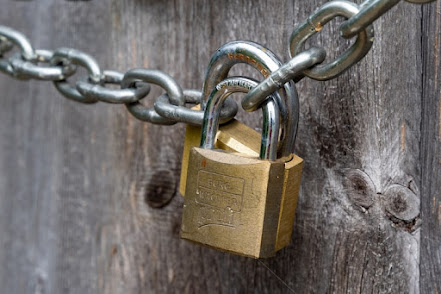10 Easy Safety Steps to Lockout Procedures
The most important portion of any lockout program is education of the employees. This step by step summary is intended for the person who is actually locking out the equipment. However, it is important for all people who work on or around the equipment to understand these procedures. The employer must provide the necessary equipment, training and education for the worker. When it comes to practicing safety within all steps, it relies on the on the worker involved. Remember only qualified personnel should be appointed to any lockout procedure. Here is a safe and sure way to protect all your assets. Article Source: http://EzineArticles.com/4380960The 10 Step Safety Program includes:
1. Employee
Education and Training - Education to Lockout Procedures is
the most important step that's why it should be considered top priority. This
is not a one time training session. Procedures and plans must be reviewed
consistently throughout the year with every employee and visitor. This is the
best way to prevent injuries and stay safe.
2. Identify Energy
Sources from Utilities - Identify the power sources such
as electricity and gas. Recognize all potential hazards present on the
equipment to be locked out. Alert any potential affected employees of the
impending lockout/tagout procedure.
3. Look for
Specific Stored Energy On the Equipment To Be Serviced - Many types of
equipment have hidden dangers in the form of stored energy. Identify all
potential dangers from stored energy and take the steps to guard against its
unexpected release. Examples of these are:
·
Coiled Springs
·
Raised Loads or Blades
·
Charged Capacitor
·
Pressure Lines for Steam, Gas
This equipment is
not locked out safely until any potential hazard is addressed.
4. Determine the
Power-Down Sequence -The order in which you shut down equipment can be vital. If you should
down certain equipment in the wrong order it could create a dangerous
situation.
5. Turn Off All
Power Controls - Sometimes equipment runs off multiple energy
controls. If equipment uses both electricity and natural gas for example both
need to be shut off. Some types of equipment cannot be locked out. This
equipment must be tagged out. These tags are meant for a warning to indicate a
person may be working on this equipment where powering up may result in
injuries. These tags do not prevent the machine from being turned on so
everyone must take special care when they come across a Lockout/Tagout Tag.
There are specific rules and regulations when it comes to tagout procedures.
6. Lock, Tag,
Block, Bleed or Vent the Specific Machine Energy Sources - There are several
types of equipment that can be used to properly lock an energy source. Some
common types of lockout devices are valve lockout, breaker lockout, plug
lockout, switch lockout, multiple lockout hasps, and ball valve lockout.
7. Clear the Area
and Test 'Off' Controls - Test the machine by turning the
controls on. Make sure the area is clear of all employees.
8. Turn the
Controls Back 'Off' -Once you have determined all the power portions of the machine are
without power. Switch it back to the off position.
9. Perform the
Required Maintenance - Now you are ready to perform
whatever maintenance you need. If you need to test out the function you are
repairing remember to always follow these procedures when the machine is turned
on then off again.
10. Remove
Locks/Tags/Devices & Power Up -Once you are all set repairing you
can remove any lockout devices and tags. This can only be done by the person
who installed the lockout devices. You are now ready to turn the power back on.
Locksmith
Gloucester provides a fast, reliable, professional service when you need it
most. 24hr call out service available. So if you are looking for a Gloucester
locksmith, we are ready to help.
For all your locksmith services depend on us. Locksmiths Gloucester use the latest in technology to ensure our customer’s safety and
security. Call 01452 260390 today

.png)

.png)
Comments
Post a Comment